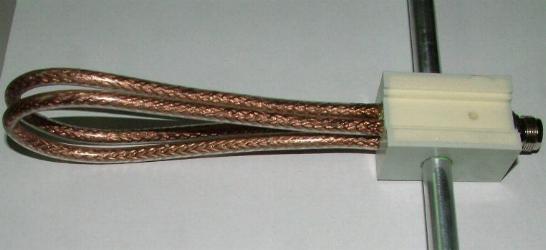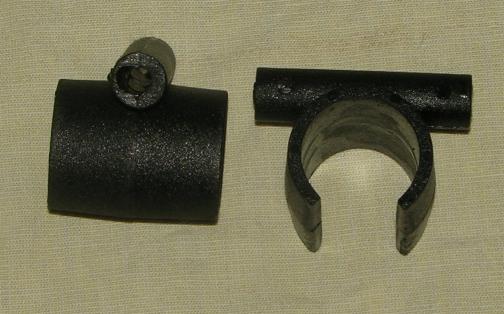The 28-Ohm-match with
2x75-Ohm-CATV/SATV-cable shown above will handle 750Wtts RF on SSB/CW on
2m. Do not bend the loop with a to small diameter! The V (Velocity of
propagation) with these cables is in the range of 0,8-0,85, most cables have a
V=0,82. Use a good quality, in the last time a lot of inferior cables with a
steel braid are on the market.
With 2xRG-59 (MIL-quality!) you
can handle 300Wtts on 2m. The given or calculated lengths
is related to the shield with short leads.

All DK7ZB-Longyagis have insulated mounted elements above the boom. That is the best
way for mounting, because the formulas for mounting through the boom and on the
boom are not very trustworthy. The factor for the longer elements in that cases
must be another for the several directors. One constant factor is not a good
choice.
I prefer elements with 8mm or 10mm diameter, because they are much less
critical than smaller diameters, e.g. 4mm. Bandwidth and tolerance against rain,
fog and stacking harnesses are much
better with thicker elements, keep that in mind!

























